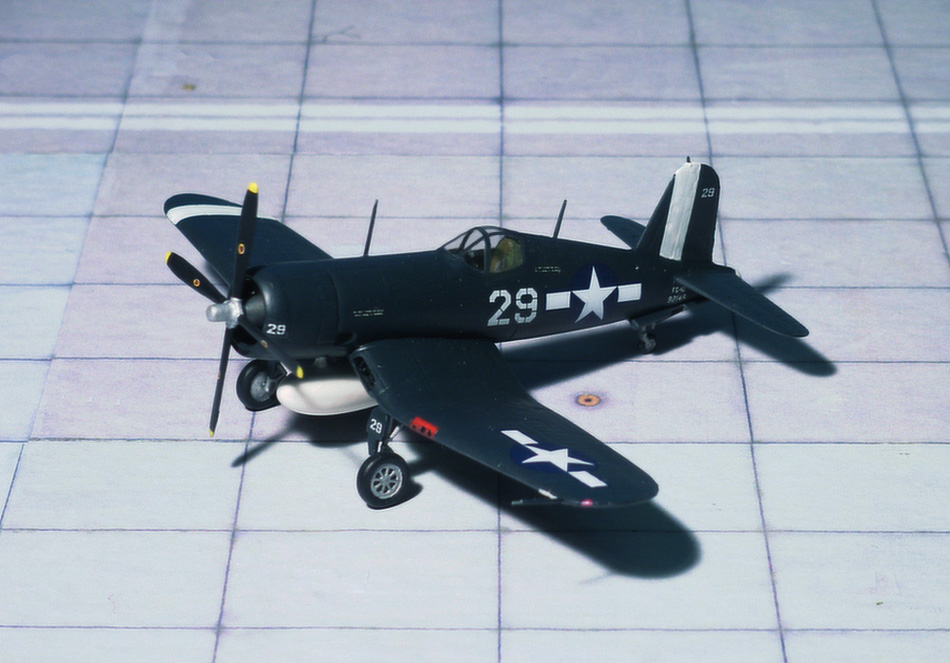

The R-2800 radial air-cooled engine developed 1,850 horsepower and it turned a three-blade Hamilton Standard Hydromatic propeller with solid aluminum blades spanning 13 feet 1 inch. At that time, the largest engine driving the biggest propeller ever flown on a fighter aircraft propelled Bullard on this test flight. Bullard, Jr., first flew the Vought XF4U-1 prototype on May 29, 1940. Less than a year later, Vought test pilot Lyman A. During April, the Vought Aircraft Corporation responded with two designs and one of them, powered by a Pratt & Whitney R-2800 engine, won the competition in June. On February 1, 1938, the United States Navy Bureau of Aeronautics requested proposals from American aircraft manufacturers for a new carrier-based fighter airplane. This airplane is painted in the colors and markings of the Corsair "Sun Setter," a Marine close-support fighter assigned to Marine Fighter Squadron VMF-113 in July 1944. The Pratt and Whitney R-2800 radial engine and Hydromatic propeller was the largest and one of the most powerful engine-propeller combinations ever flown on a fighter aircraft.Ĭharles Lindbergh flew bombing missions in a Corsair with Marine Air Group 31 against Japanese strongholds in the Pacific in 1944. The aircraft's distinctive inverted gull-wing design allowed ground clearance for the huge, three-bladed Hamilton Standard Hydromatic propeller, which spanned more than 4 meters (13 feet). View Manifest View in Mirador Viewer Usage conditions may applyīy V-J Day, September 2, 1945, Corsair pilots had amassed an 11:1 kill ratio against enemy aircraft. For more information, visit the Smithsonian's Terms of Use page.

View Manifest View in Mirador Viewer Usage Conditions May Apply Usage Conditions Apply There are restrictions for re-using this media. IIIF provides researchers rich metadata and image viewing options for comparison of works across cultural heritage collections. Usage Conditions May Apply Usage Conditions Apply There are restrictions for re-using this media.


 0 kommentar(er)
0 kommentar(er)
